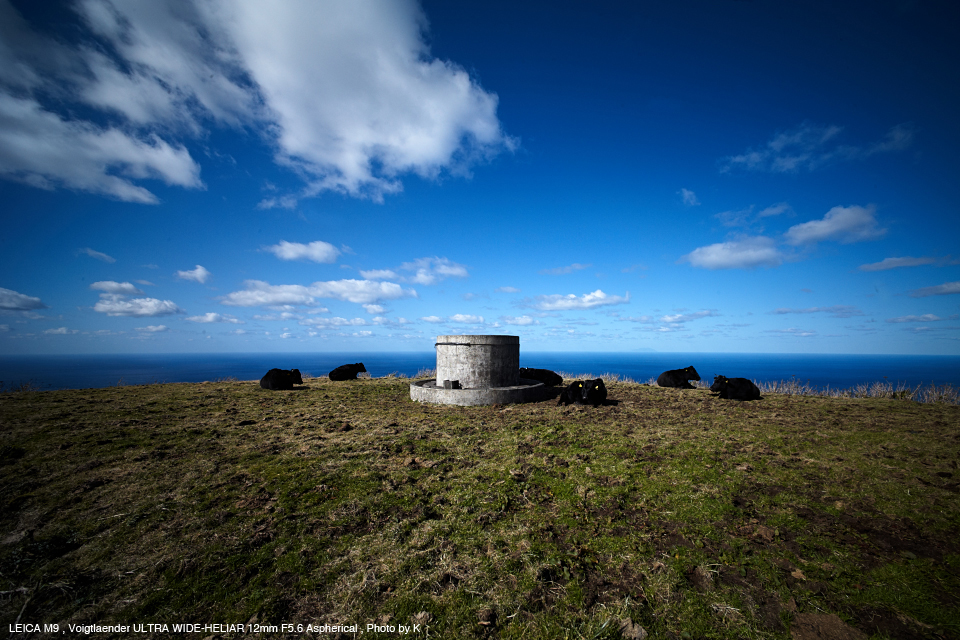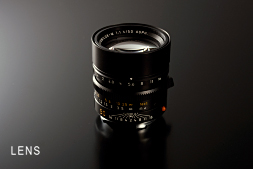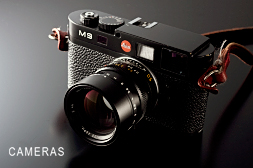
Category Tags : Voigtländer WIDE ANGLE | LEICA WIDE ANGLE 16-21mm , Carl Zeiss WIDE ANGLE , ALL LENS

I dare to shoot a wide view with a wide lens. The picture may show my worldview rather than the scene.

The torii (gateway at the entrance to a Shinto shrine) of Itsukushima Shrine. I only had the following in mind: utilizing the falloff, monochromizing, and silhouetting the subjects. The center is sharp. The corners are less sharper than the center, but sharp enough. Once the angle of view is this wide, shooting becomes just fun, regardless of the results.

On a summer day in Onomichi. A woman is going down the stairs. Just being careful with the leveling, I took this shot murmuring “it would’ve been nicer if she was using a white umbrella...” The perspective is just intense, and it captures your fingers and feet easily. Anyway, nothing is more fun than traveling and shooting.

Compared to the first version, this second version is more neutral although it's still bluish. Those who likes slide films will love this color balance. This lens becomes a 18mm on the R-D1, making it the widest lens for the camera.

This is a 12mm with the angle view of 121 degrees. Whether you need it or not, the combination of a M-mount rangefinder and this lens makes the smallest ultra-wide system. The size become a little bigger than the first version, but it's rangefinder coupled and still much smaller than SLR lenses. Yet, the price is unbelievably reasonable. My rating goes high just because of this unique existence, but it's practically a nice lens with a sharpness wide open. Although it's a little soft in the corners wide open, but it becomes sharper across the frame if you stop down. The dramatic falloff is something you want to apply. This is the most cost-effective 12mm and it will come in handy for a situation you cannot step back.

Loading..
Loading..
価格 : Loading..(税込) Loading..(Loading..)
M8/M8.2ユーザの皆様へ。
Loading..
Loading..
価格 : Loading..(税込) Loading..(Loading..)
ワイドレンズ対応保護フィルター。
Loading..
Loading..
Loading..
Loading..
価格 : Loading..(税込) Loading..(Loading..)
12mm用外部ファインダー。このサイズで抜群の見え!
価格 : Loading..(税込) Loading..(Loading..)
いっそ, レンズに合わせてボディを用意してしまうのは如何でしょう。21mmのフレームが出るメカニカルカメラ。広角好きにぴったりの, スナップシューターです。
Loading..
Loading..
価格 : Loading..(税込) Loading..(Loading..)
21mmがしっくりくる。そんな貴方には, とんでもないレンズがあります。開放f1.4。広角でもボケるんです。
価格 : Loading..(税込) Loading..(Loading..)
もっと広く写るのに1段明るい, こんなレンズはどうでしょう。ちょっと大きなレンズですが, 写りは抜群。
価格 : Loading..(税込) Loading..(Loading..)
やっぱりコンパクトなレンズがいい。スナップに最適な35mmパンケーキレンズなら, レンズが邪魔になることはありません。
SPEC
Focus length : 12mm
Aperture : f/5.6~f/22
Focusing range : 0.5m~∞
Angle of view : 121°
Number of lenses/groups : 10/8
Filter size : 67mm
Weight : 230g
Largest diameter : φ74.6mm
Length : 42.5mm
Focus distance: ∞~0.7m
SHOPPING CATEGORY
![ライカ 13415 [フィルター E67 UV/IR]](../../img/acc/filter/67mm/uvirB.jpg)
![マルミ光機 67mm [DHG スーパーレンズプロテクト]](../../img/acc/filter/67mm/marumi.jpg)
![フォクトレンダー 12mm View Finder M [12mm ビューファインダー M]](../../img/acc/voigtlander/finder/12mm.jpg)
![フォクトレンダー Bessa R4M クラシックブラック [ベッサ R4M クラシックブラック]](../../img/acc/voigtlander/body/r4m.jpg)
![ライカ 11647 SUMMILUX-M 1.4/21mm ASPH. [ズミルックスM 21mm/F1.4 ライカM]](../../img/lens/leica/summilux21/summilux21_img03.jpg)
![カール ツァイス Distagon T* 2.8/15 ZM [ディスタゴン 15mm/F2.8 ZM]](../../img/lens/carlzeiss/distagon15/distagon15_img04.jpg)
![フォクトレンダー COLOR SKOPAR 35mm F2.5 PII [カラースコパー 35mm/F2.5 VM]](../../img/lens/voigtlander/cs35/cs35_img04.jpg)

